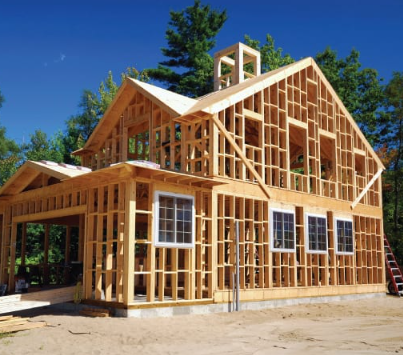Early wall maintenance prevents damage and costly repairs. Regular care keeps your home safe and beautiful longer.
Walls are often overlooked until visible damage appears, but small cracks and minor issues can lead to more significant structural problems if left unaddressed. Early maintenance of wall cracks not only protects your property but also reduces the chance of expensive repairs in the future. This article explores why timely wall crack repair matters, the hidden risks of ignoring early signs, and what effective early maintenance involves.
Why Early Wall Crack Repair Matters More Than You Think
Wall cracks may seem like simple cosmetic flaws, but many cracks indicate underlying movement or moisture issues within the structure. These problems can escalate over time, especially if the cracks are a symptom of foundation settling, water infiltration, or temperature-related expansion and contraction. When minor cracks are ignored, they can widen, allowing moisture to penetrate and cause damage such as mold growth, weakened drywall, or even wood rot behind the walls. Repairing cracks promptly helps maintain the wall’s integrity and prevents secondary issues that are costlier to fix.
Types of Wall Cracks and What They Reveal
Not all wall cracks are the same, and their size, shape, and location offer clues about the severity of the problem. For instance:
Hairline cracks often result from natural drying and shrinking of materials. They may be superficial but can still lead to paint peeling and dirt accumulation if untreated.
Horizontal cracks can signal structural stress, such as foundation shifting or pressure from soil outside the wall.
Vertical cracks near door frames or windows may indicate framing settling but can still affect wall stability.
Stair-step cracks in brick or masonry walls often point to foundation problems that require specialized repair.
Understanding these differences is crucial for selecting the appropriate repair method early, rather than applying a generic patch that might fail to address the root cause.
The Hidden Costs of Delaying Wall Crack Repair
Many homeowners underestimate how quickly small cracks can lead to expensive repairs. Beyond the immediate damage to paint and plaster, delayed repair can result in:
Water Damage: Cracks provide pathways for rain or plumbing leaks, which can saturate insulation and wall framing, leading to decay.
Mold and Mildew: Moisture trapped behind walls promotes mold growth, posing health risks and requiring professional remediation.
Decreased Property Value: Visible or concealed damage lowers a property’s market appeal and may cause inspection red flags.
Escalated Structural Issues: Foundation problems linked to cracks can worsen, leading to uneven floors, sticking doors, and, in extreme cases, compromised building safety.Addressing cracks while they are small and manageable can avoid these costly consequences.
Effective Early Maintenance Techniques for Wall Cracks
Proper early maintenance starts with identifying the crack’s cause. For superficial hairline cracks, the process usually involves cleaning, filling with flexible fillers, and repainting with compatible materials to accommodate slight wall movement. For cracks related to moisture, it is essential to locate and fix leaks or improve drainage around the building before sealing the cracks.
Structural cracks require more involved approaches, such as installing wall anchors, carbon fiber reinforcements, or underpinning the foundation. These solutions address the cause rather than just the symptom. Early engagement with a structural engineer or experienced contractor can save significant money by preventing escalation.
How Material Selection Influences Long-Term Repair Success
Many attempts to fix wall cracks fail because the wrong materials are used. For example, rigid fillers or plaster can crack again if the wall continues to move. Using elastomeric sealants or flexible patching compounds designed to accommodate small movements ensures longer-lasting results. Additionally, surface preparation is often overlooked; dust, loose paint, or debris inside the crack will prevent proper adhesion, causing premature failure.Understanding which products suit different crack types and wall materials (drywall, plaster, brick, concrete) is key to effective early maintenance.
Monitoring Cracks Over Time: When to Seek Professional Help
Even after repair, some cracks may reappear or new ones develop due to ongoing structural shifts. Homeowners can use simple monitoring tools like crack gauges or photographs over time to track changes. If cracks widen, lengthen, or new damage signs arise—such as doors or windows sticking—it is wise to consult professionals early.Ignoring this phase can lead to missed opportunities for controlled repairs before costly rebuilding becomes necessary.
The Role of Environmental Factors in Wall Crack Development
Environmental conditions significantly influence wall cracks. Seasonal temperature swings cause materials to expand and contract, inducing stress. High humidity or poor ventilation exacerbates moisture accumulation, weakening wall components. Soil type and drainage also impact foundation movement, increasing the risk of cracks.
Early wall maintenance includes addressing environmental factors, such as improving ventilation, controlling indoor humidity, or grading soil away from the foundation to reduce pressure on walls.
DIY vs. Professional Wall Crack Repair: Knowing When to Delegate
Small, non-structural cracks can often be managed with DIY patch kits, but caution is needed. Improper repair can worsen the issue or mask symptoms of larger problems. Professional assessment is recommended if cracks are wider than 1/8 inch, accompanied by bulging or discoloration, or if the cause is unclear. Professionals provide accurate diagnosis and tailored repair plans that focus on long-term durability, saving money by avoiding repetitive fixes.
Conclusion: Early Wall Crack Repair as a Cost-Effective Strategy
Wall crack repair may seem like a minor chore, but understanding its role in maintaining structural health is crucial. Early intervention, proper diagnosis, quality materials, and addressing environmental causes form the foundation of effective maintenance. By acting promptly, property owners protect their investment and reduce the risk of expensive future repairs.





